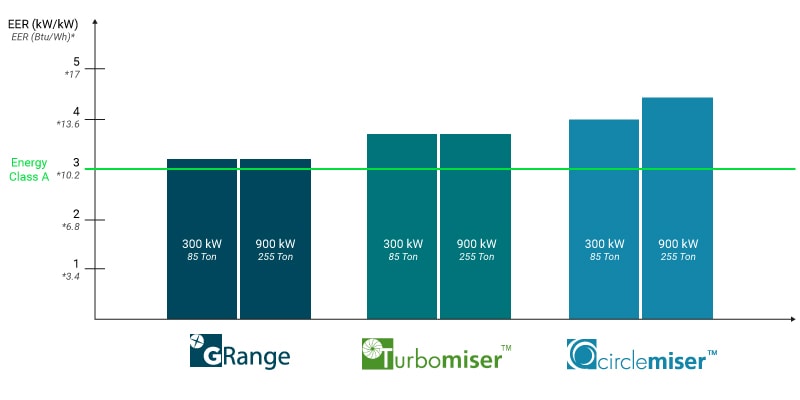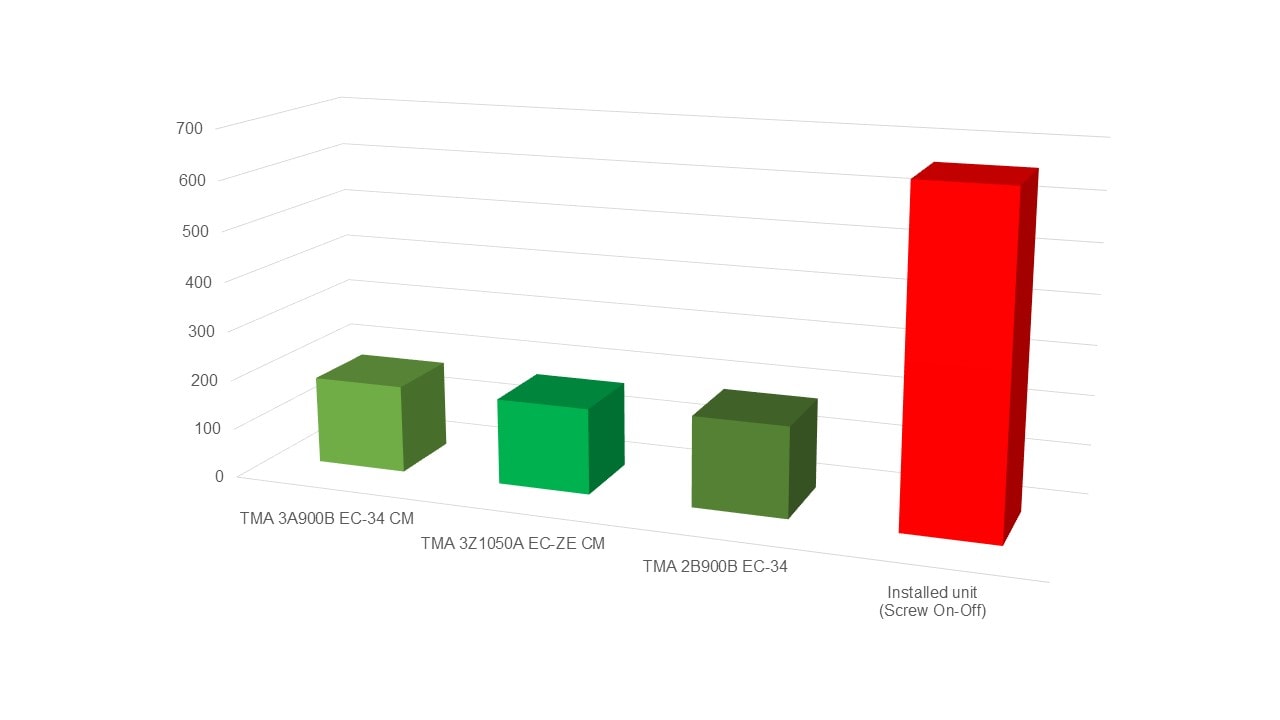Energy diagnosis: a legal obligation and a savings opportunity for companies
The energy diagnosis shows how to optimize the company’s energy and economic investments.
The energy diagnosis is an analysis that companies perform annually in compliance with regulatory requirements.
The analysis of energy consumption allows not only to acquire useful information on company consumption, but also to know any energy waste, the operating anomalies present and to obtain considerable savings through energy efficiency actions.
What happens during the energy diagnosis?
The diagnosis is an analysis, articulated in different phases, capable of returning important information on the energy performance of the systems and the consequent evaluation of improvement interventions:
- Data collection and analysis: this is the first phase during which all the data relating to the global and individual energy performance (i.e. of each functional area of the plant) are collected. Bills, technical data sheets of the systems and all the supply contracts that the company has in place are also analysed.
- Inspection and verification: during this phase, the consumption of the systems is measured with the use of technical instruments for the validation of computer models drawn up on the basis of the data obtained
- Processing of the surveys: the data collected are used to create a consumption baseline. During this phase, the evaluation of the performance indexes of each energy vector analysed also takes place.
- Benchmark analysis: the energy consumption data within the company is compared with the KPIs (performance indices) of the sector, i.e. those carried out by other external establishments belonging to the same production sector.
- Reports and intervention proposals: this is the final phase in which the reports with the data processed during the diagnosis are delivered. The reports produced in this phase sometimes also contain details relating to possible costs and implementation times for future improvement actions.
The intervention of Geoclima
Geoclima is able to provide technical solutions to effectively reduce the electricity consumption of HVAC systems, with different solutions for different applications.
Geoclima supports Consultants, Energy Managers and End Customers in the choice and solution, providing:
- Support for the energy simulation of HVAC systems, thanks to consumption calculation software, developed in collaboration with the University of Padua, and perfected over decades of experience.
- Support for the definition of a consumption baseline and assessment of correct consumption.
- Support for energy simulation to compare the consumption (and therefore the costs) of the HVAC machines currently present in the Companies, with new units proposed by Geoclima, highlighting which of the various units proposed has the greatest advantages in terms of economic savings on a time scale, analysing the Pay Back Time.
Analysis procedures
The simulation procedure performed consists of the following phases:
- Analysis of the annual trend of the hourly air temperature in the place of installation.
- Definition of the annual hourly profile of the cooling capacity required by the plant.
- Definition, on the basis of historical data of the locality, of the annual hourly profile of the external air temperature acting on the system.
- Simulation of the energy consumption of new proposed machines according to the cooling capacity and air temperature profiles
Energy efficiency
Geoclima designs and manufactures HVAC solutions capable of offering high performance in terms of efficiency and return on investment (ROI).
Geoclima chillers are specifically designed and developed to optimize the use of the Danfoss Turbocor centrifugal magnetic levitation compressor, both with R134a refrigerant and with HFO-1234ze refrigerant, and are specifically designed to meet the energy efficiency demands of the refrigeration industry (HVAC).
The Turbocor centrifugal compressor is the result of aerospace and traditional industrial technologies which, thanks to the use of magnetic bearings, the absence of oil in the circuits, variable speed and digital electronic controls, allow to reach the highest overall efficiency for water-cooled and air-cooled refrigeration units for HVAC applications.
Geoclima units with Turbocor technology are 20% to 40% more efficient than units using other traditional compressor technologies.
Learn out more here: www.geoclima.com/turbomiser
The new “Circle” series are characterized by the use of microchannel condensers with a circular exchange surface increased by 45%. The particular configuration, unique of its kind, studied and designed by the Geoclima Research and Development division allows, thanks to the increased exchange capacity, to reduce the condensation temperature, and therefore also the approach temperature and consequently to increase the energy efficiency.
The flooded evaporators “in cascade configuration”, lead to a reduction of the ΔT between the evaporation temperature and the fluid outlet temperature.
The new chillers are characterized by unrivaled levels of performance and efficiency, with an increase in EER of up to 15%, improving the already very high efficiency guaranteed by the previous units.
Under AHRI/EUROVENT conditions, the new air-cooled units register an increase in cooling efficiency from +9.5% (with single-compressor unit) to +15% (with multi-compressor unit), with a maximum achievable value of EER 4.35 and ESEER 6.8.
Learn out more here: www.geoclima.com/circlemiser
Some case studies
1. Pharmaceutical industry
- Location: Lazio
- Client: Pharmaceutical Industry
- Plant function: conditioning plant for the production of drugs
- Required power: 1200 kW refrigeration, operating 24 hours a day, 365 days a year
- Goal 1: significant reduction in electricity consumption for the HVAC system
- Goal 2: reliability of new chillers in operation 24 hours a day, 365 days a year
| Model | TMA 3B1100A EC-34 | TMA 4Z1100A EC-ZE | TMA 3B900B EC-34 CM | TMA 4Z1300A EC-ZE CM |
| Gas | R134a | R1234ze | R134a | R1234ze |
| Cooling capacity (kW) | 1200 | 1200 | 1200 | 1200 |
| Nominal Power Input (kW) | 346.5 | 313.8 | 298.5 | 275.7 |
| EER (W/W) | 3.463 | 3.825 | 4.020 | 4.353 |
Annual Consumption Analysis
2. Chemical industry
- Location: Lazio
- Customer: CHEMICAL soap and shampoo production industry
- Plant function: cooling and conditioning of the production plant
- Required cooling power 920kW, with operation 24 hours a day, 365 days a year
- Goal 1: significant reduction in electricity consumption for the HVAC system
| Model | TMA 2B900B E-34 | TMA 3A900B EC-34 | TMA 3Z1050A EC-ZE CM |
| Gas | R134a | R134 | R1234ze |
| Cooling capacity (kW) | 926 | 926 | 926 |
| Nominal Power Input (kW) | 271 | 271 | 214 |
| EER (W/W) | 3.42 | 3.417 | 4.327 |
Consumption and costs of the chiller currently in use
Assuming a cost of 0.15 euro/kWh for electricity, by virtue of the simulated data for the May-October semester, the cost of electricity associated with the machine currently used was estimated at approximately 659.75 MWh per year, corresponding at €99,000.00.
The analyses carried out led to the results summarized in Figure 2. It should be noted that the proposed units guarantee an electricity consumption that is more than 70% lower than the chiller currently in use.
3. Food industry
- Location: Veneto
- Client: Important Wine Cellar
- System function: conservation and maintenance of wine in the tanks
- Required power: 800 kW cooling
- Goal 1: evaluation of technologies for a significant reduction in electricity consumption for the HVAC system
- Goal 2: increase in cooling capacity to expand production
| Model | GHA B3140 EC-34 | TMA 3Z900A EC-ZE CM |
| Type | Screw | Circlemiser |
| Gas | R134a | R1234ze |
| Cooling capacity (kW) | 1010 | 1040 |
| Nominal Power Input (kW) | 288 | 263 |
| EER (W/W) | 3.3 | 3.937 |
Diagram showing the electricity consumption in MWh estimated annually for the proposed machines
4. Hospitals
- Location: southern Lazio
- Client: ASL
- Plant function: refrigeration plant modernization
- Required power: 600 kW cooling
- Goal 1: grouping smaller chillers into one larger one
- Goal 2: evaluation of technologies for a significant reduction in electricity consumption for the HVAC system
| Model | TMA 2Z600A EC-ZE | TMA 2Z550A EC-ZE |
| Gas | R1234ze | R1234ze |
| Cooling capacity (kW) | 611 | 611 |
| Nominal Power Input (kW) | 161 | 165 |
| EER (W/W) | 3.8 | 6.106 |
Annual estimated energy requirement: comparison between current machine consumption and that expected for the machines proposed by Geoclima
Energy efficiency certificates (White Certificates)
With White Certificates (Energy Efficiency Certificates) we mean the incentive mechanism that rewards the energy savings achieved in the final uses of energy.
Every obliged subject (electricity and/or gas distributors with more than 50,000 users connected to their network), based on the volume of electricity and/or methane gas delivered, receives each year a savings target to be achieved through the implementation of energy efficiency measures.
The obligated parties can fulfill the obligation to save in two ways:
- directly implementing the energy efficiency projects admitted to the mechanism
- by purchasing, on the market organized by the GSE, energy efficiency certificates obtained from other entities admitted to the mechanism, such as for example certified ESCos, or from public and private end users who have appointed a certified EGE.
Geoclima, together with its partners, is organized for:
- submit energy efficiency projects in the HVAC sector to the GSE and implement the projects
- carry out the projects, measuring the savings
- present the results to the GSE to obtain the certificates, sell the certificates on the market and share the results with the clients










